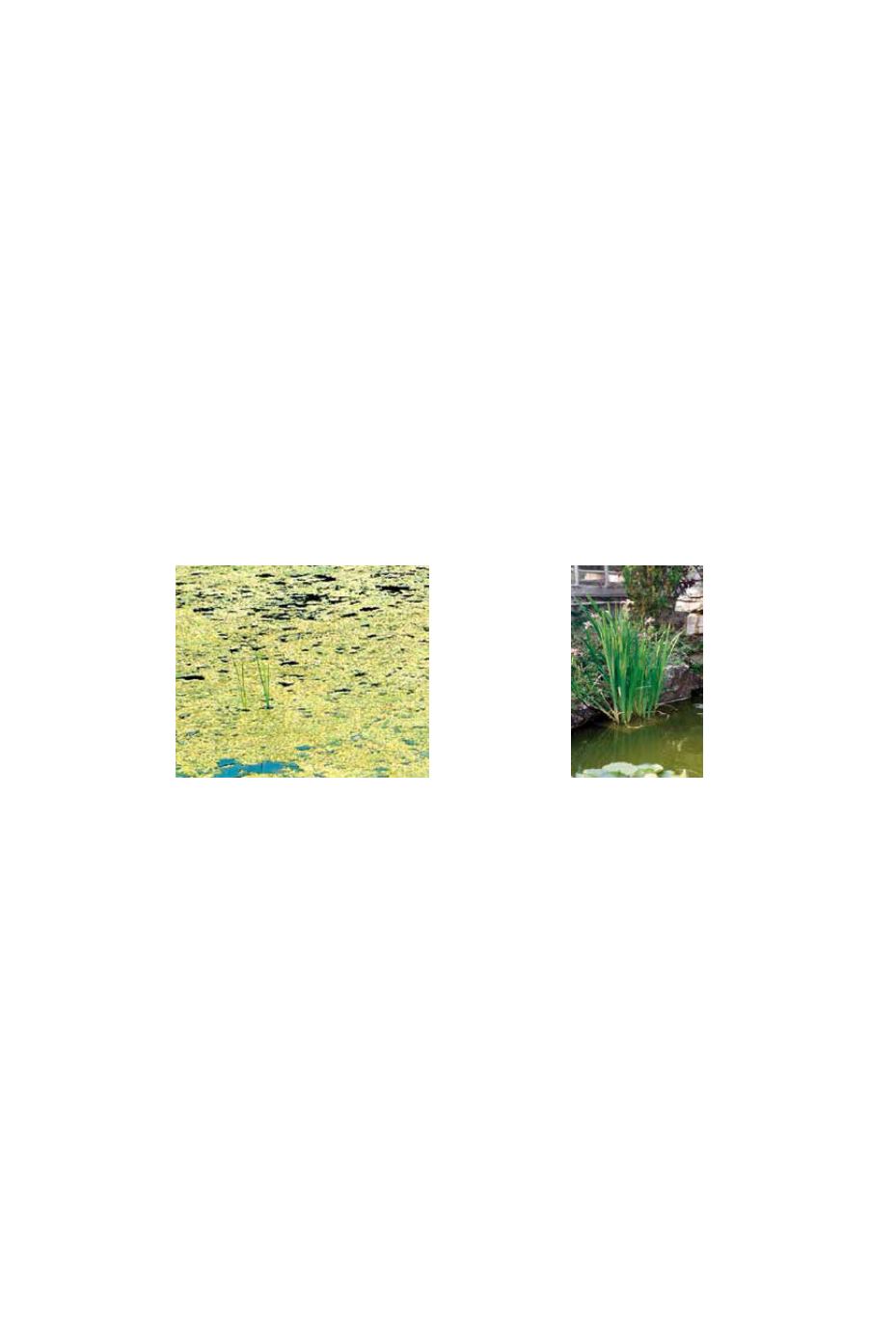
43
Fax: 519-782-3139 or 1-800-728-6324 Email:
Fish Problems
When fish are stressed, they become susceptible to disease and sickness. Water quality can affect the health of
fish and other aquatic life. Temperature, low oxygen, pH level, excess ammonia and nitrites affect water quality.
Rapid temperature changes, spawning and rough handling will also stress fish.
The application of herbicides,
lawn & garden fertilizers and pesticides nearby can lower water quality and even kill fish.
Signs of fish problems:
Gasping at surface
– usually indicative of low oxygen levels, often in humid weather. May also indicate that
there are too many fish for the pond capacity. To solve this problem keep your pump running, especially at
night when oxygen levels are at their lowest.
Lethargy/inactivity
– indicative of poor water quality which may have many causes. OVERCROWDING and
OVERFEEDING will lower water quality by increasing ammonia and nitrite levels. Also, chemicals from spraying
your lawn and gardens can enter the pond, causing inactivity and even death. We recommend testing your
water for excess amounts of ammonia and nitrites. If ammonia and nitrites are high, do a partial water change.
Drain 1/3 of the pond’s water and replace it slowly using fine nozzle spray from a garden hose. Then add a
water treatment to neutralize the water (See page 24). Repeat in 4-5 days. The use of biofilter (See page 28-29),
particularly when Koi are present, will greatly reduce problems associated with water quality. Bacteria in the
biofilter will rapidly convert ammonia and nitrites into harmless nitrates.
Fungus, Tail Rot, White Spots
– often occur when fish are stressed. First identify the disease and then treat with
an appropriate medication (See page 22).
Algae Problems
Severe algae problem Green water
Both newly planted ponds, as well as established ponds, provide ideal conditions early in the season for the
growth of suspended algae, causing green, murky water. This is a completely natural occurrence and is not
harmful to plants or fish.
Contributing Factors
1. Sunlight
– when plant growth is not yet sufficient to provide shade
2. Warm Water
– resulting from inadequate plant cover and/or shallow water
3. Dissolved Nutrients
– present in the water, providing food upon which the algae thrives
4. A Large Fish Population
– fish waste is eventually broken down into nitrate fertilizer
5. Excessive Feeding of Fish
– unconsumed fish food and excess fish waste
Recommendations
Be Patient!!!
Allow the pond time to achieve a natural ecological balance between plant life, nutrients, light
and temperature. Once the plants start to grow, they will filter the sunlight; thus providing shade and lowering
water temperature. In addition, these plants will consume excess nutrients in the water, thus depriving the
algae of food, or use a biofilter.
Do Not Change the Water.
This merely provides a fresh supply of dissolved minerals for the algae to feed upon,
and thus prolongs the time for a natural clearing to take place. Further, sudden temperature changes place
stress upon the plants as well as fish.
(continued on page 44)
TROUBLESHOOTING


